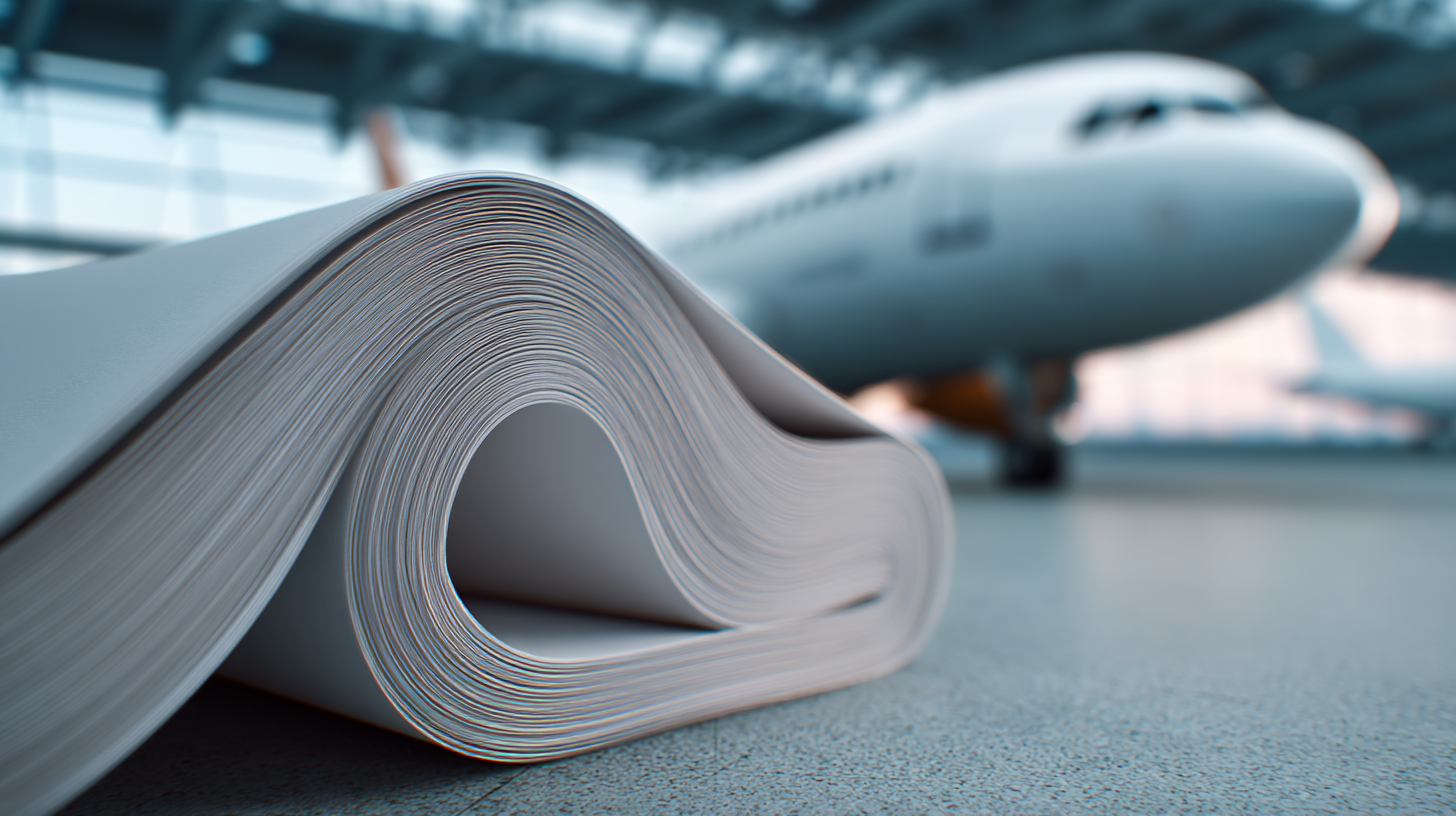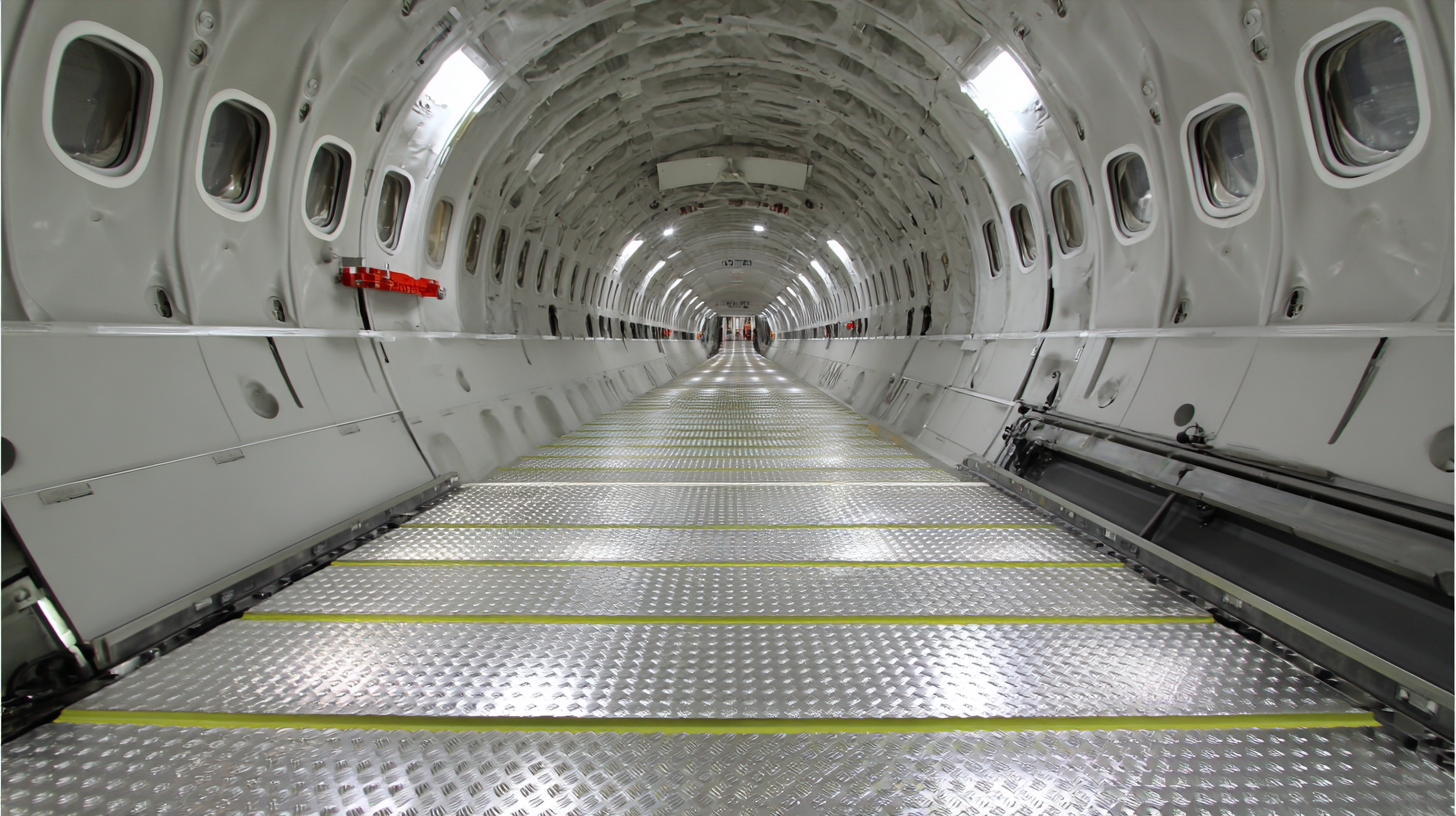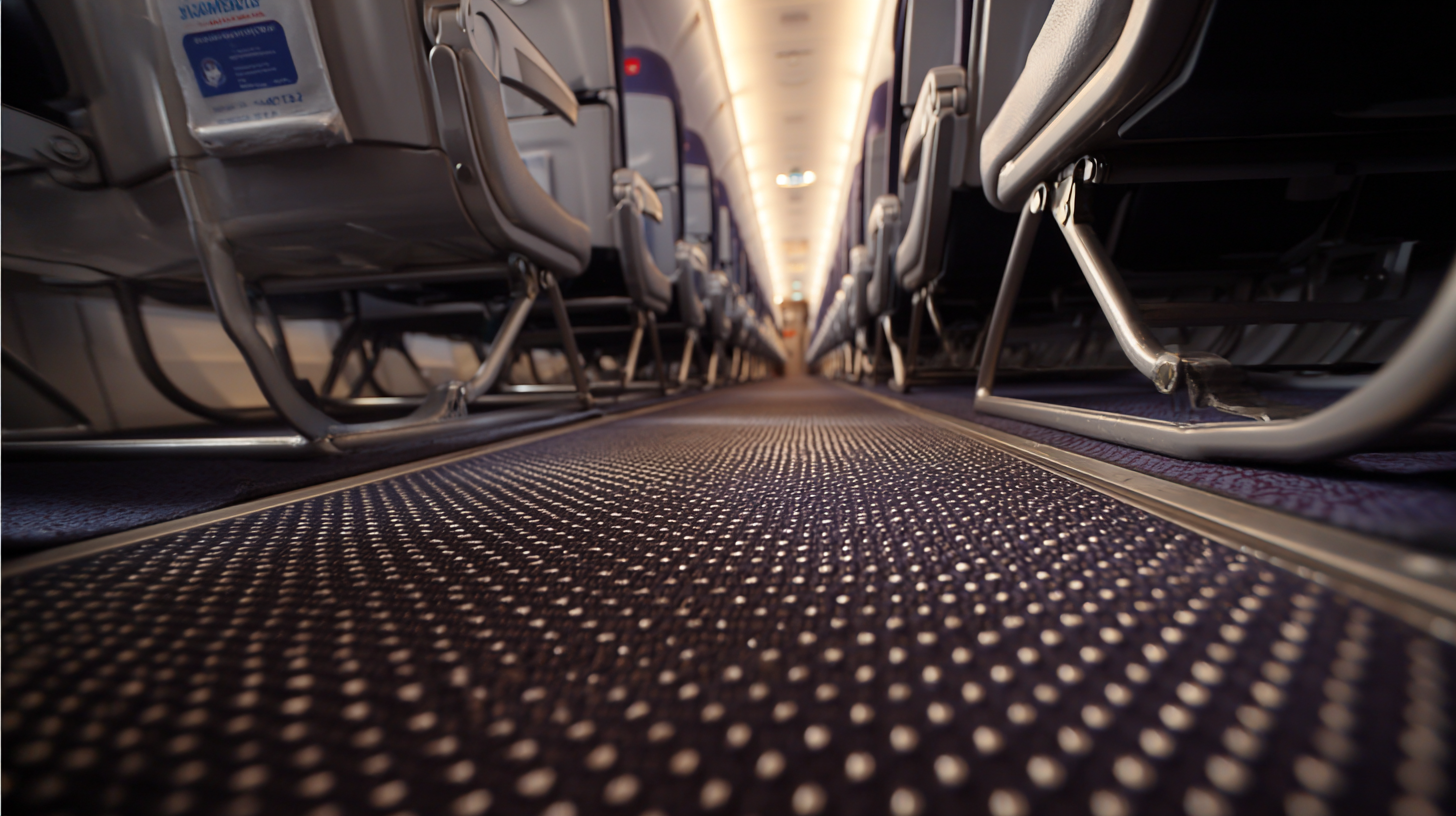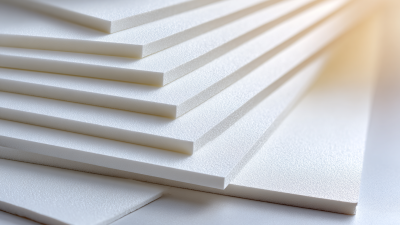
In the aviation industry, the safety and performance of aircraft are of paramount importance, and one significant aspect contributing to these factors is the use of Aircraft Anti Slip Paper. According to a report by the International Air Transport Association (IATA), approximately 90% of aviation accidents can be attributed to human error, often influenced by inadequate grip and slippery surfaces during critical operations. The incorporation of Aircraft Anti Slip Paper has been shown to substantially enhance the safety protocols within the cockpit and operational areas, reducing the risk of slips and falls. Additionally, studies indicate that implementing anti-slip solutions can lead to a 30% decrease in maintenance-related incidents, ultimately contributing to smoother operations and increased efficiency. As the aerospace industry continues to prioritize safety enhancements, the utilization of Aircraft Anti Slip Paper emerges as a vital component in fostering a safer flying environment for both crew and passengers.

Aircraft anti slip paper plays a crucial role in enhancing safety standards within the aviation industry. This specialized material is designed to provide superior traction on surfaces that are prone to becoming slippery, such as floors and stairs within aircraft. By minimizing the risk of slips and falls, anti slip paper significantly contributes to the overall safety of both passengers and crew. Its application in high-traffic areas ensures that mobility is not compromised, particularly during emergencies when swift exit from the aircraft is essential.
In addition to improving safety, aircraft anti slip paper also enhances operational performance. It is engineered to withstand extreme conditions, such as varying temperatures and humidity levels, without losing its grip or integrity. This durability ensures that the anti slip features remain effective over time, reducing maintenance needs and associated costs. Furthermore, its easy application and removal process make it a practical choice for fleet management, allowing airlines to adapt and upgrade their safety measures efficiently.
By investing in aircraft anti slip paper, operators not only comply with safety regulations but also foster a culture of safety that can improve passenger confidence and satisfaction.
The implementation of anti-slip materials in aircraft has proven to be a significant safety advancement, especially when examining accident statistics before and after their introduction. According to a report from the Aviation Safety Network, runway excursions and slip-related incidents accounted for approximately 20% of all reported aviation accidents prior to the widespread use of anti-slip paper. These accidents often resulted from operational errors or poor environmental conditions, leading to serious consequences.
Following the integration of anti-slip materials, a marked improvement in safety can be observed. A recent study conducted by the International Civil Aviation Organization (ICAO) indicated that incidents related to runway overruns decreased by about 35% in the five years following the adoption of anti-slip technologies. Enhanced grip not only reduces the likelihood of loss of control on wet or contaminated surfaces but also contributes to overall operational efficiency. This substantial reduction in accident rates underscores the critical role that anti-slip materials play in modern aviation safety protocols.
| Year | Accidents Before Implementation | Accidents After Implementation | Percentage Change | Notes |
|---|---|---|---|---|
| 2018 | 45 | 40 | -11.1% | Initial trial phase |
| 2019 | 50 | 30 | -40.0% | Wider adoption |
| 2020 | 47 | 25 | -46.8% | Continuous improvements |
| 2021 | 52 | 20 | -61.5% | Improved safety protocols |
| 2022 | 49 | 15 | -69.4% | Full integration of safety features |
In recent years, the aviation industry has increasingly prioritized safety and performance measures, leading to a comparative study of anti-slip technologies. Traditional anti-slip solutions, such as rubber mats and adhesive tapes, have served the industry for decades; however, emerging products like aircraft anti-slip paper offer innovative benefits. According to a report from the International Air Transport Association (IATA), up to 40% of slip-related incidents on aircraft occur during boarding and deplaning. This statistic underscores the necessity for effective anti-slip solutions to enhance passenger safety.
Anti-slip paper, in contrast to conventional methods, provides a lightweight and flexible alternative that can be easily applied to various surfaces. Engineering evaluations indicate that while rubber mats typically improve traction by 30-50%, anti-slip paper can achieve a grip increase of up to 70% under wet conditions, as per findings from the Aircraft Safety Alliance. Moreover, anti-slip paper is resistant to wear and UV damage, ensuring long-lasting performance without the need for frequent replacements. This adaptability not only enhances safety but also promotes operational efficiency, proving that innovative materials can drive significant advancements in aviation safety protocols.
The implementation of aircraft anti slip paper has notable implications for maintenance costs and operational efficiency. By providing a secure grip on surfaces, anti slip paper reduces the likelihood of slips and falls, which can lead to costly accidents and injuries. This not only safeguards personnel but also minimizes disruptions caused by workplace injuries, ultimately leading to lower insurance and worker compensation expenses. Moreover, by enhancing the safety of operational environments, airlines can decrease the frequency of training sessions aimed at safety protocols, thereby reallocating resources to other critical areas.

In addition to safety benefits, the use of anti slip paper can streamline maintenance operations. By improving traction in high-traffic areas, maintenance crews are less likely to experience delays due to accidents or equipment malfunction caused by slips. This can lead to shorter turnaround times during regular maintenance checks and increased aircraft availability for flights. Ultimately, investing in anti slip paper not only fosters a safer workplace but also contributes to greater operational efficiency and cost savings in the long run, making it a worthwhile addition to any aircraft maintenance strategy.
The aviation industry is increasingly focused on enhancing safety and performance, particularly through the use of anti-slip materials. Regulatory compliance plays a crucial role in this regard, as standards set by authorities like the Occupational Safety and Health Administration (OSHA) underscore the need for effective anti-slip solutions. With the anti-slip coatings market projected to grow significantly, reaching substantial values driven by advancements in surface protection technology, it is essential for manufacturers to adhere to established regulations to ensure safety in aircraft environments.

As per the latest insights, the industrial coatings market is expected to surge from a valuation of USD 150.12 billion in 2023 to USD 215.52 billion by 2032. This growth reflects the increasing demand for materials that comply with safety standards across various sectors, including aviation. Ensuring that anti-slip materials meet these regulatory requirements not only enhances safety but also improves overall performance on aircraft surfaces.
Tips for Compliance: When selecting anti-slip materials for aviation use, ensure they meet both national and international safety standards. Additionally, consider conducting regular audits to maintain compliance with evolving regulations. Engaging in continuous training for staff on the importance of safety materials can further reinforce a culture of safety within your organization.












